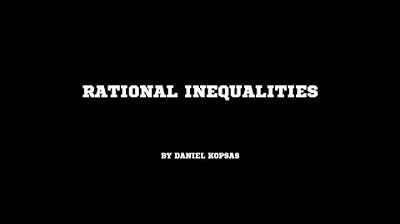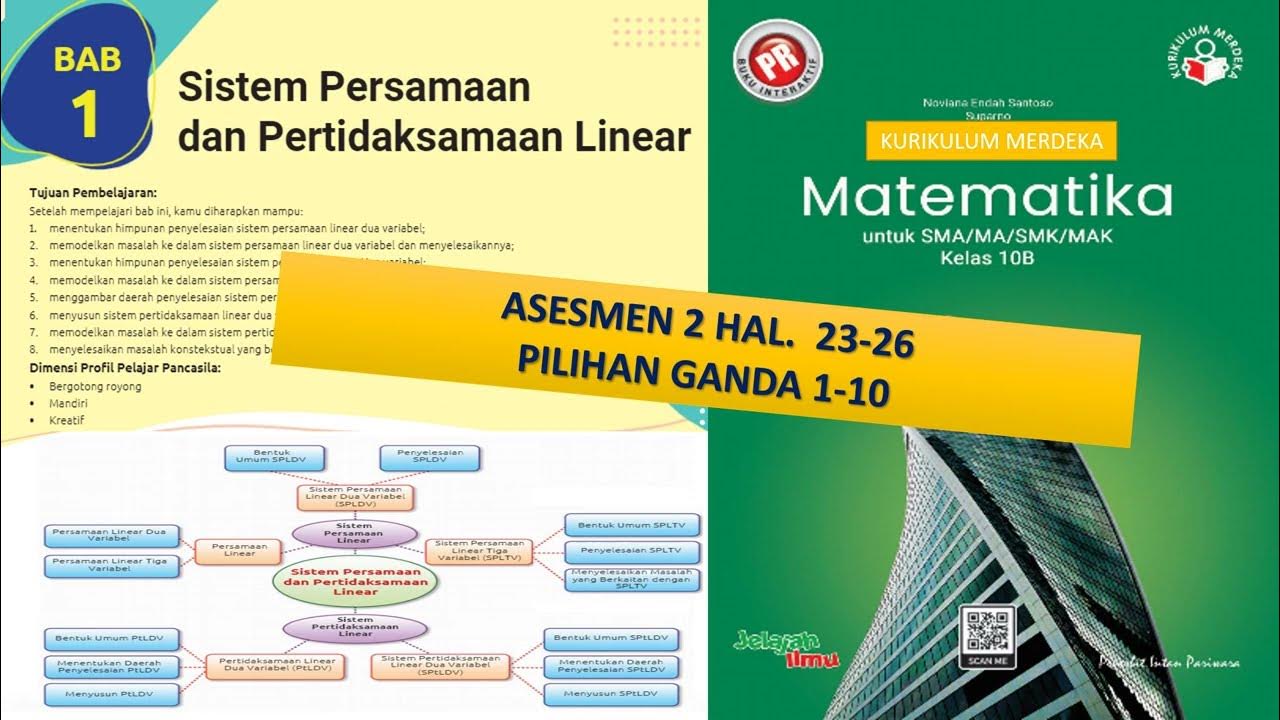Rational Inequalities
Summary
TLDRThis video tutorial offers a step-by-step guide on solving rational inequalities. It begins with an example, illustrating how to set up a number line, identify critical points, and determine the sign of each region. The video explains how to interpret the inequality 'greater than or equal to zero' and 'less than zero', and how to express the solution in interval notation and as inequalities. It also covers a method to solve inequalities involving non-zero constants by rearranging the inequality and finding common denominators. The tutorial concludes with a suggestion to explore more videos on the topic in the precalculus playlist.
Takeaways
- 📚 The video focuses on solving rational inequalities, starting with the example \( \frac{x - 3}{x + 2} \geq 0 \).
- 📏 A number line is used to identify critical points where the numerator or denominator equals zero, which are -2 and 3.
- ⭕️ At -2, an open circle is used on the number line because the function is undefined there, while at 3, a closed circle indicates the numerator is zero.
- 🔍 Three regions are identified on the number line to determine the sign of the expression in each region.
- 🤔 Testing points within each region helps determine if the expression is positive or negative, which is essential for solving inequalities.
- 📈 The solution to the first example is expressed in interval notation as \( (-\infty, -2) \cup [3, \infty) \), and can also be described using inequalities.
- 🔄 The process is repeated for a second example, \( \frac{(x - 4)(x + 1)}{x - 3} < 0 \), with points of interest at -1, 3, and 4.
- 🚫 For the second example, all points of interest are open circles since the inequality is strict (less than zero).
- 📉 The solution for the second example is given as \( (-\infty, -1) \cup (3, 4) \), and can be described using inequalities as well.
- 🔄 A third example involves moving a constant to the other side of the inequality and finding a common denominator to simplify the expression.
- 📌 The third example's solution is \( (-\infty, 1) \cup [2.5, \infty) \), with specific attention to the points where the expression equals zero or is undefined.
- 👍 The video concludes with a suggestion to check out the precalculus playlist for more videos on similar topics.
Q & A
What is the main topic of the video?
-The main topic of the video is solving rational inequalities.
What is the first example of a rational inequality given in the video?
-The first example is \( \frac{x - 3}{x + 2} \geq 0 \).
How does the video suggest to start solving the first example?
-The video suggests starting by setting the numerator and denominator equal to zero to find points of interest on the number line.
What are the points of interest for the first example and why are they significant?
-The points of interest are -2 and 3. They are significant because they are the values that make the numerator or denominator zero, which helps in determining where the function is undefined or where the sign of the expression changes.
Why is there an open circle at -2 on the number line for the first example?
-There is an open circle at -2 because the denominator is zero at this point, making the function undefined, so it should not be included in the solution set.
How does the video determine the sign of the expression in different regions of the number line?
-The video picks test points in each region, substitutes them into the expression, and checks whether the result is positive or negative.
What is the solution to the first example in interval notation?
-The solution is \( (-\infty, -2) \cup [3, \infty) \), with an open parenthesis at -2 and a closed bracket at 3, indicating the inclusion or exclusion of these points.
What is the second example of a rational inequality presented in the video?
-The second example is \( \frac{(x - 4)(x + 1)}{x - 3} < 0 \).
How does the video handle the inequality sign in the second example?
-The video focuses on finding regions where the expression is negative, as the inequality is less than zero.
What is the final solution to the second example using interval notation?
-The solution is \( (-\infty, -1) \cup (3, 4) \), indicating the intervals where the expression is negative.
What adjustment does the video make to the third example before solving it?
-The video moves the constant '3' to the other side of the inequality and combines the terms over a common denominator before solving.
How does the video suggest expressing the solution to the third example as inequalities?
-The solution can be expressed as \( x < -1 \) or \( x \geq \frac{5}{2} \), which corresponds to the regions where the expression is less than or equal to zero.
What is the advice given at the end of the video for finding more resources on the topic?
-The video suggests checking out the precalculus playlist for more videos on similar topics.
Outlines

此内容仅限付费用户访问。 请升级后访问。
立即升级Mindmap

此内容仅限付费用户访问。 请升级后访问。
立即升级Keywords

此内容仅限付费用户访问。 请升级后访问。
立即升级Highlights

此内容仅限付费用户访问。 请升级后访问。
立即升级Transcripts

此内容仅限付费用户访问。 请升级后访问。
立即升级浏览更多相关视频

8TH EDITION | BOOK 2 | EXERCISE 3A | QUESTION # 1, 2, 3

Rational Inequalities

Absolute value inequalities | Linear equations | Algebra I | Khan Academy

Pembahasan Buku PR Matematika Kelas XB Intan Pariwara|Asesmen 2 Pilihan Ganda No.1-10|Kurmer

Adding and Subtracting Rational Expressions With The Same Denominators

Rational Equations
5.0 / 5 (0 votes)
